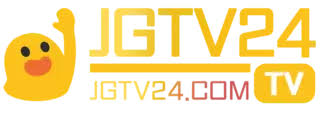The Easiest Way to Make Sure You Have Enough Cash Flow for Your Business

Cash flow is the lifeblood of any modern business. Even the most profitable companies can struggle to meet their obligations without a steady cash stream. Ensuring you have enough cash flow requires careful planning, disciplined execution, and a keen understanding of your business’s financial needs. Here are some effective strategies to help you maintain a healthy cash flow.
Understand the Cash Flow Needs of Your Business
The first step in managing cash flow is understanding it. Cash flow is the movement of money in and out of your business. A sash flow that is positive means that more money is entering than going out, while if your cash flow is negative, this indicates the inverse. That’s why it’s important to regularly monitor your cash flow statement to keep track of your financial health. This statement provides insights into your operating activities, investing activities, and financing activities, helping you identify trends and make informed decisions.
Generate a Cash Flow Forecast
A forecast of your cash flow is a projection of your business’s cash outflows and inflows over a specific period. It helps you foresee prospective shortfalls and then plan accordingly. As central London accountants recommend, in order to create an accurate forecast, consider your historical data, upcoming expenses, and expected income. Regularly update your forecast to reflect changes in your business environment. This proactive approach allows you to address potential issues before they become critical.
Optimize Inventory Management
Inventory management can significantly impact cash flow for businesses that sell physical products. Excess inventory ties up cash that could be used elsewhere, while insufficient inventory can lead to lost sales. Implement an inventory management system that balances stock levels with demand. Use techniques such as just-in-time inventory, which reduces the stock you hold and frees up cash for other uses.
Improve Your Receivables Process
Slow collections can severely impact your cash flow. Implementing efficient receivables processes ensures you get paid faster. Start by setting clear payment terms and communicating them to your customers. Offer incentives for early payments, such as discounts. Automated invoicing systems are used to send out invoices promptly and follow up on overdue accounts regularly. Consider using factoring services to improve liquidity, where you sell your receivables to a third party for immediate cash.
Manage Your Payables Strategically
While paying your bills on time is essential, managing your payables can help maintain cash flow. Take advantage of payment terms offered by your suppliers. For instance, if you have 30 days to pay, use that time to manage your cash better. Building good relationships with suppliers can also be beneficial; they offer extended payment terms or discounts for early payments. However, avoid delaying payments to the point where it damages your creditworthiness or supplier relationships.
Control Your Expenses
Keeping a close eye on your expenses is crucial for maintaining a healthy cash flow. Review your expenses regularly and identify areas where you can cut costs without compromising quality or service. Negotiate better terms with your suppliers, reduce unnecessary overheads, and explore cost-effective alternatives for essential services. Implementing cost control measures can free up cash for critical business activities.
Read Also: streetinsider
Secure a Line of Credit
Having access to a line of credit can provide a safety net for your business. It offers a flexible source of funds that you can draw on when needed to cover short-term cash flow gaps. Establishing a line of credit when your business is doing well can be easier than during a financial crunch. This proactive step ensures you have access to funds during unexpected situations.



